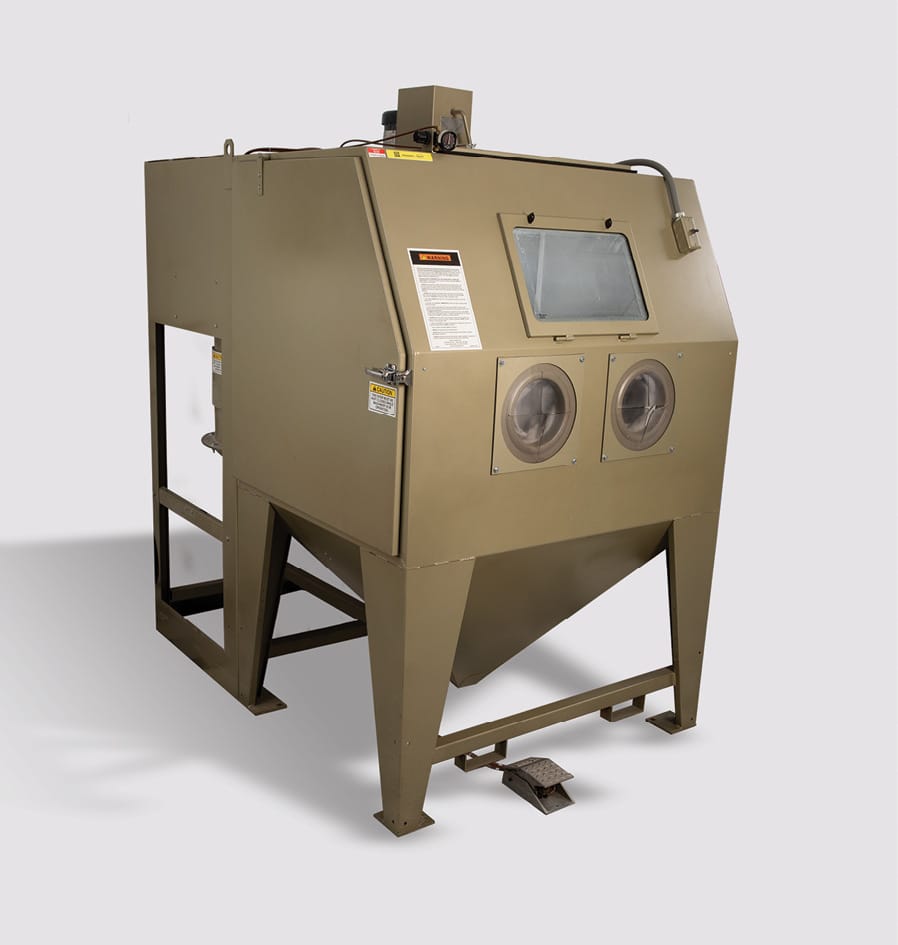4.3.2.2 Abrasion with Power Tools
Small handheld power tools or larger shop tools can speed the cleaning/roughening of surfaces. As in manual mechanical cleaning, a belt, rotary and orbital sanders may be used with abrasive media in a range of roughnesses; the operator must control the amount of material removed and, usually, one part is cleaned at a time.
Bristle blasting is abrasion using a rotary wire brush tool. The angle of the bristles and their acceleration as they are ‘snapped’ over a perpendicular bar give the bristle tips a speed and angle more like a particle-blasting treatment than a traditional rotary brush, leaving a pitted, clean surface.

4.3.2.3 Abrasive Blasting
Abrasive blasting cleans by shooting corundum, aluminium oxide, silicon carbide or other abrasive blasting media at a surface. Systems can work by injector, using the vacuum of a venturi nozzle to draw abrasive particles from a reservoir and shoot them at the surface or by pushing both air and abrasives from the same pressurised reservoir. Blasting systems emit dust, so they are best used in closed, covered and well-ventilated areas. These systems require trained operators and health and safety precautions for use. Figure 87 shows one of the most common surface preparation methods: grit blasting.


